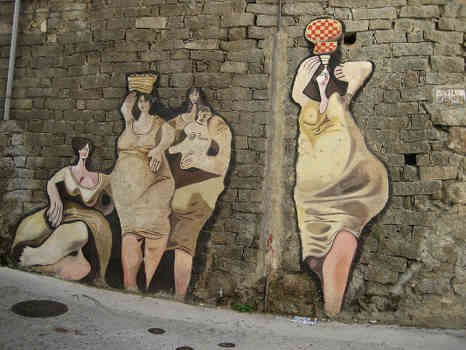
One of the reasons tourists visit Italy is for its beautiful historical buildings. Indeed, it’s widely known that, among European countries, Italy is one with the highest number of important cultural sites.
However, not many people know that in addition to buildings and paintings dating back to Middle Ages, Renaissance, etc, in Italy, you can also find some ancient stone engravings!
So, in this article, I’ll tell you about the most beautiful Italian stone engravings site.
VAL CAMONICA
Those of you who have already visited Italy might know that Val Camonica is a well-known tourist destination for mountains lovers. It’s located in the Lombardy region, in the north of Italy.
So, if you love the mountains, being sourrounded by nature, and calm, Val Camonica can be a good destination for your holidays.
However, in Val Camonica you can enjoy also something different from mountain life. Indeed, here there is one of the major Italian sites of stone engravings.
The rock engravings and rock drawings in Val Camonica are considered one of the largest collections of prehistoric petroglyphs in the world.
They also were the first World Heritage Site UNESCO recognized in Italy in 1979.
The first engravings were discovered in 1909 by Walther Laeng but it was only in 1955, after the institution of Parco Nazionale delle incisioni rupestri in Naquane, that the engravings started to be adequately preserved.
The majority of these engravings and drawings appear in the towns of Boario Terme, Darfo, Nardo, Paspardo, Capo di Ponte and Cimbergo.
According to researchers the oldest engravings were made around the 8th millennium BC and the latest around the 19th century.
These figures are ideograms. So, they’re not the representation of a real specific object but the representation of the idea people had of a specific object.
The ideograms have either been carved with the technique of the “martellina” or have been painted with the technique of graffiti.
Among these ideograms the most famous one is surely the Rosa Camuna – Camunian Rose. Indeed, Rosa Camuna has been adopted as the official symbol of Lombardy.
After studying the area, the archeologist Emmanuel Anati recreated the chronology of these ideograms.
According to Emmanuel Anati, the first ideograms were created by nomadic hunters during the 8th millennium BC. The cravings tipically represent animals such as deer and elk.
Then, during the Neolithic, in Val Camonica the first sedentary settlements appeared, and the ideograms of this period actually show human figures and geometrical elements that are thought to represent agricultural practices.
There are also ideograms from the Copper Age, which represent some of the discoveries of the time such as the wheel, metallurgy, etc.
The last ideograms are from the Bronze Age, Iron Age and Medieval Age.
The ones coming from the Bronze age depict especially weapons, showing that warriors had acquired a special importance in society.
Ideograms from the Iron Age are the majority and depict duels, hunting scenes, scenes showing the idea of male superiority and heroism.
Finally, ideograms from the Medieval Age depict many Christian symbols.
As you can see this chronology is really interesting because it traces the major stages of humankind in this area like a diary.
If you want to visit the Parco Nazionale delle incisioni rupestri in Naquane, the opening hours are usually 8.30am to 7pm from Tuesday to Sunday.
The price of the ticket is usually around 6€.
For more information, please visit the official website of Parco Nazionale di Naquane.
Have you already visited these ancient stone engravings? Did you like them?
Credits
Original image by KlausHausmann




 Common expressions to talk about sleep in Italian
Common expressions to talk about sleep in Italian